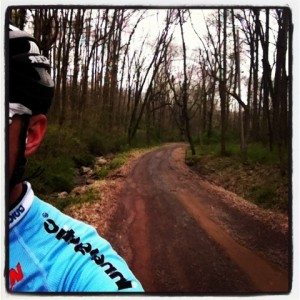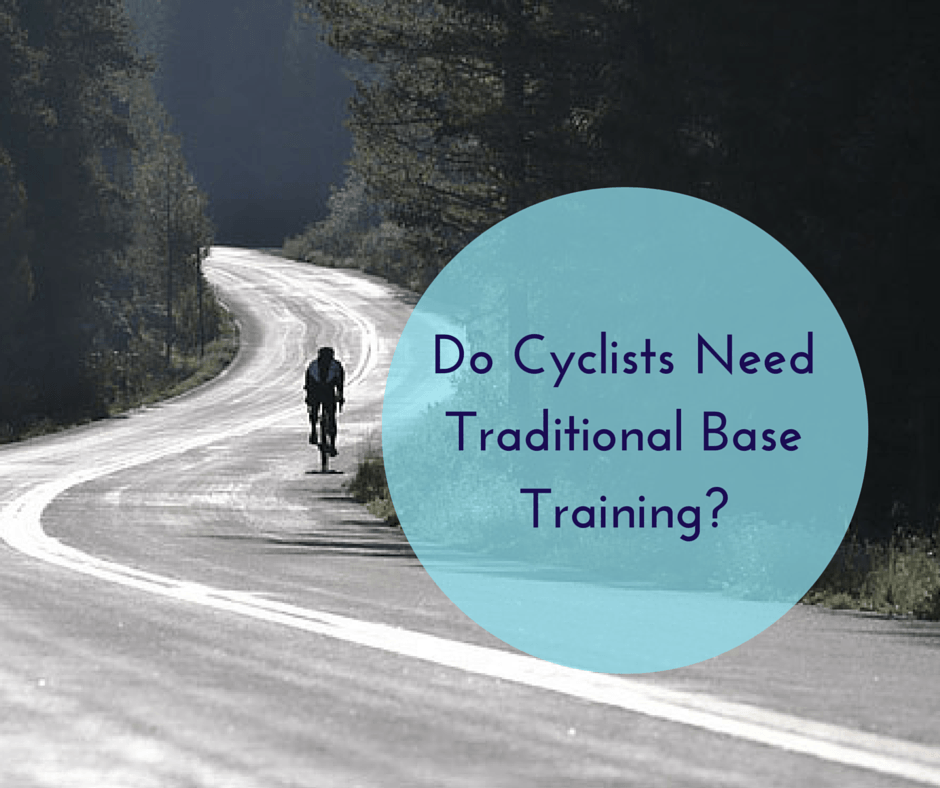During the winter months, many cyclists take on a steady diet of traditional base training: long, slow zone 2 or “aerobic” training rides. For years, this has been the gospel for cyclists of all types, from the pros down to the greenest cat 5 racers, from endurance riders to crit racers to gran fondo riders. The question is, with all the science coming out touting the benefits of high-intensity interval training, are those long base miles the key to season-long success or are they doing more harm than good?
In today's podcast, I'll explore the concept of traditional base training, how it's supposed to be done, who needs that traditional base training and who doesn't need it. I'll also give you a way to compromise on your traditional base training which can help you maintain your high-end fitness throughout your base period and leave you stronger and fresher during the season.
Click through for the show notes and remember that the sponsor for this episode of the Tailwind Coaching Podcast is Stages Cycling. Check out their power meters and help support the show!
How Does Traditional Base Training Work?
Base training works on the idea that you'll sub volume for intensity.
Use TSS to determine how much more volume. 50 TSS/hr for 4 hours = 200 TSS. 80TSS for 2.5 hr = 200 TSS.
- Problem: Decreased intensity means decreased training stress and stalled improvement.
- Solution: You need more volume. Lots more. Most amateur cyclists don't have time to give that much more volume (most have obligations they need to meet like work, school, family, etc.)
How Much Base Training Do You Need?
- Most amateur cyclists don't need a huge aerobic base each year.
- That aerobic base is built over years, so the longer riding the better the base you have (part of the reason why “beginner” cyclists improve a lot just riding: they are building their aerobic base/system.)
 Pros do long base miles, don't we need those too?
Pros do long base miles, don't we need those too?
- Pros need to perform at high intensity following 200K of base type efforts (races like Milan – San Remo and classics.)
- In many cases they are participating in stage races where multiple days are ridden back to back to back
- Amateur cyclists are not making race-winning moves at that level or after that kind of distance
Keep in mind that most amateur events are less than 1.5 hours in length.
Even fondos or other longer events are not limited by aerobic base endurance (or resistance, as talked about later)
Amateur cyclist limiters are FTP and VO2 max power
- FTP (functional threshold power) is the amount of power you can put out at your aerobic threshold, and is highly trainable
- VO2 is maximal aerobic power, also very trainable up to a genetic potential (see Episode 66 for a detailed explanation.)
The Old Adage: You Are What You Do
If you train slow, you'll be slow. If you train fast, you'll be fast.
- Slow base miles make you ride slow
- Faster intervals make you ride fast
Amateur cyclists should train for what their goals are: if you're a crit racer, don't waste the time putting in 4-hour base rides. If you're a fondo rider, you'll need some endurance, FTP and VO2 work.
Spending weeks to months doing long, low-intensity rides will simply erode high-intensity fitness, so there needs to be some balance.
High-intensity fitness is harder to rebuild than maintain (once per week in the base phase.)
Compromising On Base Training
In order to compromise on base training and maintain some higher end fitness, consider reverse periodization.
Allows you to partake in one of the reasons people like “base miles” – it gets away from structured intervals.
Intensity can be done without structure by allowing terrain, wind and other riders in a group dictating it (Fartlek style training.)
For those who don't mind some structure, consider reverse periodization:
- Why it works: you build the VO2 max ceiling (see episode number 66 for more details) first
- Endurance is be built during the season once outside: time ridden between intervals and during “kitchen sink” workouts applies as “base mile” and endurance work.
- You have raised your maximal work capacity (VO2 max) and your ability to perform at a high percentage of that (FTP) already, now you are just increasing the fatigue resistance below those levels (which is all an aerobic base does for you, really.)
Trainer work is perfect for building skills and intensity, for raising VO2 and FTP, but most won't sit on the trainer long enough to build aerobic base work.
- You'll raise your aerobic endurance (or fatigue resistance) by adding additional miles during the season instead of during the winter.
- You can build techniques during the winter during short, high intensity bouts, without jeopardizing fitness or risking burnout (when planned properly.)
- Technique work builds overall efficiency which can increase fatigue resistance during in-season aerobic work.
Don't Neglect Your Foundational Base:
Reverse periodization actually allows for a bigger foundational base because time spent on the bike is minimal, allowing more time for functional strength, strength/endurance and force production work both on and off the bike.
Who Still Benefits From Traditional Base Training?
- Long distance riders, ultra-endurance racers, brevet riders.
- Higher category stage racers who need to perform at the end of long stages and day after day
- Higher category long distance racers/fondo competitors who need to make race winning moves after significant distance/time
Podcast: Play in new window | Download (Duration: 46:38 — 64.1MB)
Subscribe: RSS
So there you have it: a compelling argument for why you should NOT do traditional base training this year and you should switch it up. Step up to some high intensity work and watch your fitness blossom come spring! If you're not sure how to get started, you can pick from a ton of great training options in my downloadable training plan store. Get your foundational base work done with my Unbreakable Core Stability module and Raw Strength training plan. Then you can pick from a number of plans like my Full Season Training Solution or Advanced Full Season Training Solution to get your fitness on the upswing for spring. You can also get a ton of great training tips FOR FREE, so sign up for the Tailwind Coaching Newsletter to get my best coaching tips delivered to your inbox, along with a free bonus training plan, updates, and exclusive discounts like the Unbreakable Core Stability discount!
If you enjoyed this episode, please do me a favor and head over to the Tailwind Coaching Podcast on iTunes and rate it 5 stars. A positive review helps the podcast move up the ratings, reach more listeners, and help more people get stronger, faster and fitter. Don't forget to post any questions to the Tailwind Coaching Facebook page, on the Tailwind Coaching forums, contact me via email or leave a comment below. Don't forget to support our sponsors and help to keep this podcast free, help me to get this information to more people and help grow the cycling community.
[wdsm_ad id=”5402″ class=” aligncenter” ]
